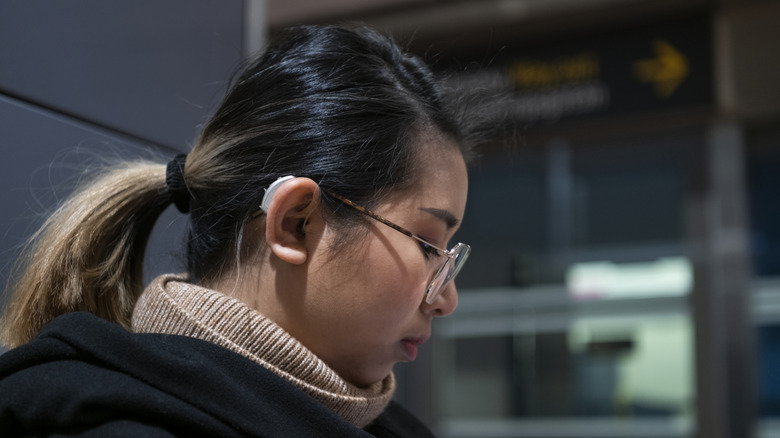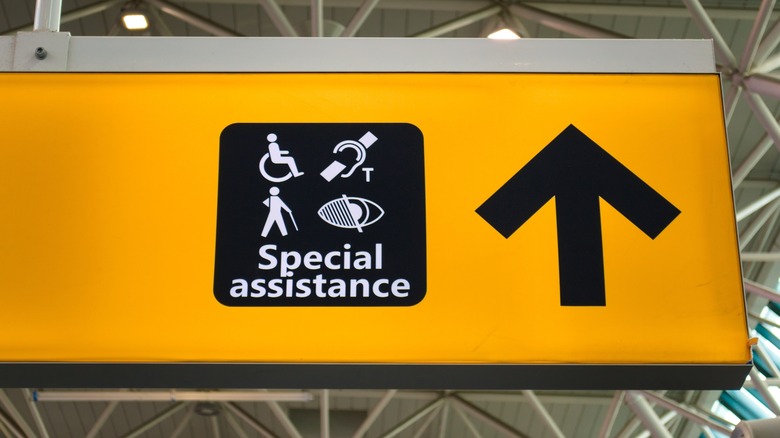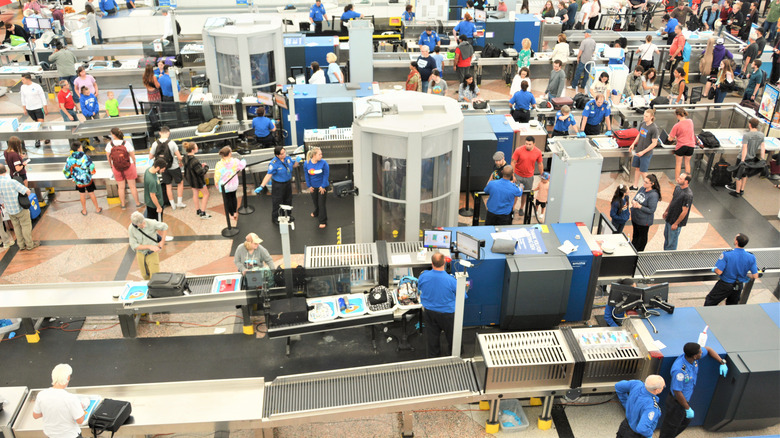What Travelers Need To Know About Going Through TSA With Hearing Aids
Traveling comes with all kinds of challenges. For deaf and hard of hearing travelers, navigating airport security may require some additional considerations. From communicating effectively with TSA officers to getting through the screening process with hearing aids, knowing what to expect and preparing accordingly can make the experience smoother. We spoke with Lily Yu, a deaf travel content creator on Instagram (@deafjourney) and the mind behind Deaf Journey, to gather some practical insights on how to handle TSA checkpoints when you have hearing aids or are otherwise deaf or hard of hearing.
One of the most important things to do before setting foot in a TSA checkpoint is to arrive early. "At least a few hours before your flight departs," recommends Yu. This extra time allows you to navigate security without feeling rushed, so you can have enough time to handle any unexpected situations if they arise. "Stay informed by checking your flight information on mobile apps for any updates or important messages," advises Yu. Schedule modifications, gate changes, or other updates do come up, and since intercom announcements aren't always accessible to everyone, having a reliable way to get these updates ensures you stay informed throughout your journey.
Yu also suggests keeping all your important documents — including your boarding pass and all your necessary IDs — within easy reach so that they are readily accessible to prevent any delays at checkpoints. Finally, to avoid any hold-ups at security, she recommends making sure that your water bottle is empty ahead of time and avoiding carrying large containers of liquids, aerosols, gels, creams, or pastes that exceed 3.4 ounces as per the standard TSA guidelines.
Communication at the TSA checkpoint
According to Lily Yu, deaf or hard of hearing travelers should always inform TSA staff about their hearing condition and any necessary accommodations before going through security to help set the stage for a smoother screening process. Yu recommends using a speech-to-text app like Big or Cardzilla to communicate, as they display text in a large, easy-to-read format, making it simpler for TSA staff to understand you. You can type out messages or questions, and the officer can read them off your phone. There is also a symbol you can wear at many airports to signal a non-visible disability.
However, even after informing TSA staff that you are deaf or hard of hearing, you might still encounter challenges. TSA agents are trained to assist passengers with disabilities, but based on Yu's personal experiences as a frequent traveler, "Sometimes, TSA staff may not have experience interacting with Deaf individuals, as they continue speaking to me even after I've informed them that I'm Deaf and cannot hear." This can create confusion and delay the screening process, so it's crucial to reiterate your needs as clearly as possible.
If the TSA agents are having difficulty communicating, Yu suggests asking them to write their instructions on paper or use a speech-to-text app on their phone. Bringing a notepad and pen as a backup can also be helpful. Otherwise, if you need additional support with communication, you can request the services of a TSA Passenger Support Specialist (PSS), an officer specially trained in assisting travelers with disabilities and medical conditions. You can reserve a PSS officer in advance through the TSA Cares Assistance form.
Wearing hearing aids through security
For travelers who wear hearing aids, Lily Yu recommends keeping them on during the security screening process and informing the TSA agents. "This communication helps staff understand their situation and facilitates the screening process," she says. According to the TSA, passengers are not required to remove hearing aids or cochlear implants. But what about proceeding through the X-ray machine or metal detector? There is some conflicting information regarding whether TSA's scanning devices can damage hearing aids and cochlear implants. To be safe and avoid this possibility, it's important to communicate this to the agent. "Deaf or Hard of Hearing travelers can also request a manual inspection of their hearing aids instead of going through the X-ray machine," suggests Yu.
Yu strongly recommends signing up for programs like TSA PreCheck, Global Entry, or Clear to streamline the travel experience, allowing you to bypass the longer security lines and make the screening process much less stressful. "I'm able to breeze through airport security, skipping long lines and avoiding the hassle of removing my shoes. These programs have been invaluable in saving me time," Yu details. Joining can be particularly valuable for travelers who need extra time or accommodation while going through security. By skipping the regular lines, you can unlock a more accessible travel experience and avoid the confusion that can arise from hurried interactions with TSA agents. By following Lily Yu's helpful guidelines, deaf or hard of hearing travelers (including anyone with hearing aids) can navigate TSA checkpoints with much more ease and confidence.


